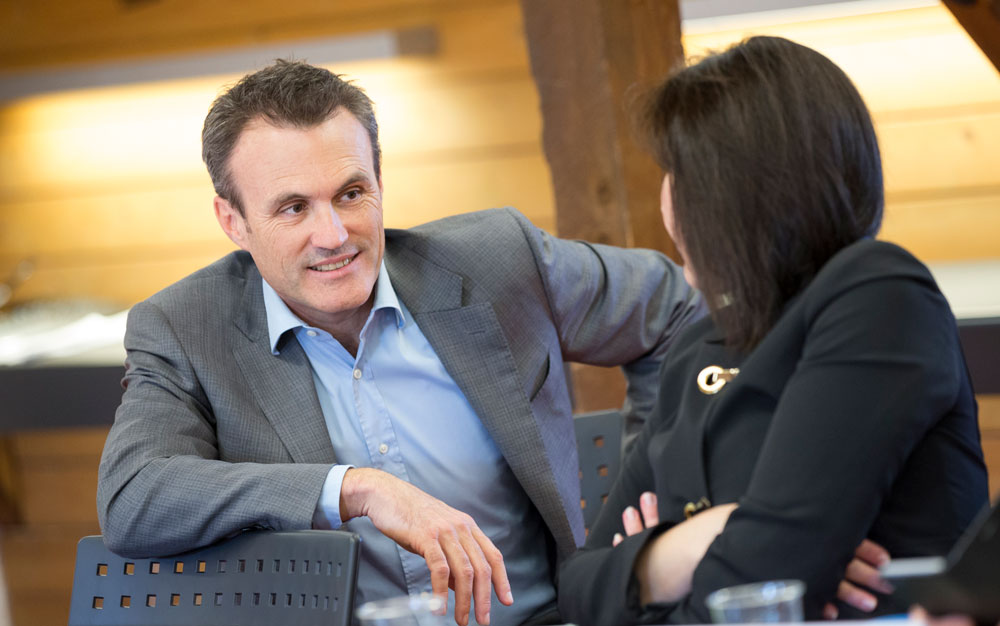Developing and implementing solutions to relevant issues relating to the energy transition in Switzerland: this was the aim of the energy funding programme, which has been managed by Innosuisse since 2013 and will be completed at the end of 2020. The core element of this programme was the establishment and management of eight Swiss Competence Centers for Energy Research (SCCERs) in seven action areas. Adriano Nasciuti, President of the Steering Committee and Innovation Council of Innosuisse, takes a look back at the past eight years in an interview.

Mr Nasciuti: What is your assessment of the past eight years with respect to the energy funding programme?
In addition to competition from established, conventional solutions, innovations in the energy sector often fall victim to the so-called “valley of technological death”, since their development requires more time and investment than in other areas. It was therefore important and right to start with the SCCER at all stages of the energy innovation chain – from basic research to applied research and development – and to include legal, regulatory and behavioural aspects.
We can look back on eight successful years of the energy funding programme. The competence centres have developed solutions to relevant technical, social and political issues relating to the 2050 Energy Strategy or have taken a significant step forward. In doing so, the SCCERs have brought together academia and practice and thus made an important contribution to the transfer of knowledge and technology. They also provided important networking opportunities, which led to increased and valuable cooperation between a wide variety of energy players in Switzerland.
What does that mean in practice?
Of the more than 1300 researchers on average who were working with the SCCER and on shared activities each year from 2013 to 2020, the number who obtained a PhD degree totalled almost 400. Some of these graduates, as well as the 1,700 Master’s graduates, have already continued their careers in practice, and will do their bit to bring the latest scientific findings to SMEs, large companies and other organisations. Throughout the entire funding programme, the researchers have launched more than 1,400 projects, around 900 of which were and are being carried out with partners from industry and society. These partners have also gained access to the 330 or so prototypes as well as pilot and demonstration equipment installed as part of the SCCERs. Finally, and I am convinced of this, the 41 spin-offs and the 120 or so patents that have been submitted also show just how successful the SCCERs are.
What can this success be attributed to?
A key success factor was down to the fact that more than one higher education institution was always involved in the research and development activities per SCCER. In this way, the various universities were able to benefit from each other’s strengths. In addition, the considerable involvement of private and public implementation partners from the very beginning has also contributed to an effective technology transfer. This has made it possible to ensure that researchers are concentrating on products and services that are actually relevant to the Swiss economy and society.
An essential element in the management of the SCCERs – particularly in the second funding period – was the collaboration between the individual competence centres and disciplines. Why was this so important to Innosuisse?
That’s right. While the focus in the 2013–2016 funding period was on the establishment of the centres, the second phase focused on shared, inter-SCCER projects, referred to as “joint activities”. These were aimed at strengthening the interdisciplinary collaboration between the centres. In the case of systemic challenges such as the transformation of the energy system in Switzerland, collaboration between the various disciplines and competence centres is vitally important.
Can you illustrate the collaboration with a concrete example?
Let us take, for example, the reduction of energy consumption in buildings: the challenge here is to ensure high standards with respect to comfort indoors, while also achieving a positive energy balance and CO2 neutrality. On the one hand, the appropriate technologies must be available, such as vertical photovoltaic modules, microstructured glazing of windows, or building materials involving only small amounts of what is known as grey energy. These technologies must also be combined, and controlled with the latest sensor and control technologies. On the other hand, aesthetic and architectural aspects as well as the acceptance and behaviour of users must be taken into account. Technical innovation must therefore be complemented by economic, social and also legal perspectives.
Has this approach proved successful?
Yes, very. Just like with the energy transition, many of the challenges facing Switzerland are highly complex and require a systemic approach if they are to be tackled successfully. Experience with the energy funding programme has shown that it is worthwhile investing in coordination and cooperation across various universities and disciplines. In the end, the overall performance is more than the sum of the outcome of the individual projects.
Taking a look into the future: what’s next for the SCCERs?
The SCCERs have created networks in the respective fields of energy research, which will largely continue to exist. What’s more, researchers and implementation partners are already working on projects that will extend beyond the duration of the funding programme. The energy transition thus also represents an opportunity for the Swiss economy, which can bring innovative solutions to the market and thus not only secure the country’s energy of the future, but also create added economic value. I am confident that Swiss energy policy will continue to provide appropriate support for innovation and the networking of all key national and international players.
Last modification 09.04.2021





